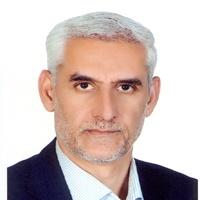Biosafety Considerations of Genetic Engineering and Chloroplast Engineering
Author(s):
Abstract:
Using plants as bioreactors to produce recombinant proteins (Molecular Farming) has different premium benefits compared to other pharmaceutical production systems. Plant expression systems in comparison with other bioreactors have several advantages over the other technologies including their economic advantage, high production, scalability, edibility, possibility of expression of proteins in specific part of plant and organelles in plant cells and being free of protein and pathogen contamination. But, bio-safety concerns should also be addressed when using GM plants. Some of these concerns are: product safety, existing selectable markers resistant to antibiotics in products and, gene flow from GM plants to non transgenic plants, wild types and weeds. In spite of existing different physical and biological methods to limit gene flow, it is one of the most important subjects in the safety of GM products. The plastid DNA itself is lost during the process of pollen maturation and is not transmitted to the next generation and the lack of plastid DNA in pollen thereby minimizes the possibility of leaking transgenes to related weeds or crops. Therefore, this method is one of the best methods in biosafety of transgenic plants. In this article, we will study important aspects of gene flow from GM plants, chloroplast transformation and also we will consider successes in the production of some recombinant proteins in the Faculty of Agriculture at Tarbiat Modares University. A lot of the companies producing transgenic plants have understood the importance of this aspect and have included it into their research and marketing strategies so that it will reduce the anxiety. The selectable genes are the first and the most important candides that should be avoided in producing transgenic plants. In the near future, eliminating selectable marker genes will be one of the most important steps in the production of transgenic plants.
Keywords:
Language:
Persian
Published:
Journal of Biosafety, Volume:3 Issue: 2, 2011
Page:
9
https://magiran.com/p1194995
مقالات دیگری از این نویسنده (گان)
-
Isolation and Characterization of Delta 15 Desaturase (FAD3) Gene From Camelina sativa L.
MohammadFazel Soltani, Alireza Zebarjadi *, Maryam Abdoli Nasab, Mokhtar Jalali Javaran, Danial Kahrizi
Journal of Applied Biotechnology Reports, Winter 2020 -
Enhanced expression of tissue plasminogen activator via gene silencing suppressor strategy using P19 protein
Amiri M., Jalali, Javaran M. *, Ehsani P., Haddad R
Journal of Agricultural Biotechnology,


